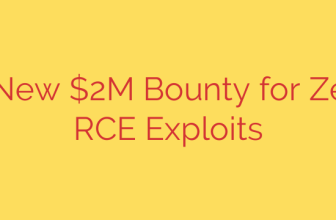
Fortifying the Future: Navigating the Evolving Landscape of Public Sector Cybersecurity
In an increasingly digital world, public sector agencies are the guardians of our most sensitive data and the operators of our critical national infrastructure. From citizen health records and tax information to transportation grids and emergency services, the information and systems they manage are foundational to a functioning society. This central role also makes them a prime target for a growing number of sophisticated cyber threats, demanding a forward-looking and resilient approach to security.
The challenge is no longer just about building higher walls; it’s about creating an intelligent, adaptive defense capable of anticipating and neutralizing threats before they can cause significant harm.
The Unique Battlefield: Why Public Sector Cybersecurity is Different
Unlike private corporations, government and public agencies operate within a unique set of constraints and face distinct challenges that complicate their security posture. Understanding these differences is the first step toward building a more effective defense.
- Vast and Sensitive Data Repositories: Public agencies hold enormous volumes of personally identifiable information (PII), protected health information (PHI), and classified national security data. A breach here doesn’t just impact a bottom line; it can erode public trust and threaten national security.
- Legacy Systems and Technical Debt: Many agencies rely on outdated legacy systems that were not designed for the modern threat landscape. These systems are often difficult to patch, expensive to replace, and create significant security vulnerabilities that attackers can exploit.
- Strict Budgetary and Procurement Cycles: Public sector funding is often rigid and subject to lengthy approval processes. This can hinder the ability to quickly adopt new security technologies or respond to emerging threats with the agility of a private company.
- Complex Regulatory and Compliance Demands: Government bodies must navigate a complex web of regulations (like FISMA, HIPAA, and CMMC) that dictate security standards. While essential, ensuring compliance across sprawling networks can divert resources from proactive threat hunting and defense modernization.
On the Horizon: Emerging Threats Targeting Government Agencies
Cybercriminals and nation-state actors are constantly refining their tactics. Public sector leaders must look beyond today’s threats and prepare for what’s coming next. Several key trends are shaping the future of cyber warfare against government entities.
First, the rise of AI-driven phishing campaigns and deepfake technology is making it harder than ever for employees to distinguish between legitimate and malicious communications. These attacks are no longer generic emails but highly personalized and convincing messages that can bypass traditional security filters.
Second, the exploitation of Internet of Things (IoT) devices presents a massive and growing attack surface. As cities become “smarter” with connected sensors, traffic controls, and utility meters, each new device becomes a potential entry point for attackers to infiltrate critical infrastructure networks.
Finally, we are seeing an increase in sophisticated supply chain attacks, where adversaries compromise trusted software vendors or hardware suppliers to gain access to government networks. This tactic bypasses perimeter defenses by turning a trusted partner into an unwitting trojan horse.
Building a Digital Fortress: Proactive Strategies for Public Sector Defense
A reactive security posture is a losing battle. To protect public trust and ensure continuity of services, agencies must adopt a proactive, multi-layered defense strategy grounded in modern security principles.
1. Adopt a Zero Trust Mindset
The old model of a trusted internal network and an untrusted external one is obsolete. A Zero Trust Architecture operates on the principle of “never trust, always verify.” Every user, device, and application must be authenticated and authorized before accessing any resource, regardless of its location. This dramatically reduces an attacker’s ability to move laterally within a network after an initial breach.
2. Leverage AI and Automation for Defense
Just as attackers use AI, defenders must leverage it as well. AI-powered security platforms can analyze billions of data points in real time to detect anomalous behavior, identify emerging threats, and automate incident response. This frees up human analysts to focus on high-level strategic tasks and significantly shortens the time from detection to remediation.
3. Foster Robust Public-Private Partnerships
Cybersecurity is a team sport. Government agencies cannot go it alone. Strengthening partnerships with private sector security firms and industry threat-sharing organizations (like ISACs) provides access to cutting-edge technology, specialized expertise, and critical threat intelligence that can help agencies stay ahead of adversaries.
4. Invest in the Human Firewall
Ultimately, technology is only one part of the solution. Your people are a critical line of defense. This means moving beyond once-a-year compliance training. Implement continuous security awareness training and phishing simulations to equip employees with the skills to recognize and report threats. Cultivating a strong, security-first culture is one of the most effective investments an agency can make.
The path forward requires a fundamental shift from a compliance-focused mindset to a risk-based, operationally resilient one. By embracing modern frameworks like Zero Trust, leveraging advanced technologies, and fostering a culture of shared responsibility, public sector organizations can not only defend against today’s attacks but also build a secure foundation for the future of digital government.
Source: https://cloud.google.com/blog/topics/public-sector/navigating-the-evolving-cybersecurity-landscape-key-insights-for-the-public-sector/








